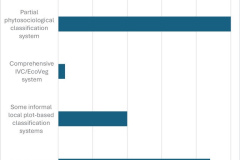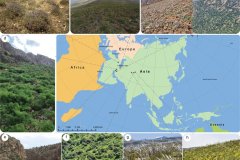The editorial for the special issue presents some important phytosociological work that completes the picture of Central Asia's vegetation diversity and presents the plant communities of even more exotic areas of Asia.
The authors stressed the urgent need for a systematic classification of vegetation in Asia's diverse grassland ecosystems. Despite their great ecological, climatic and cultural importance, Asian grasslands remain underrepresented in global vegetation research. This gap is due to uneven development of research capacity, methodological inconsistencies, limited access to data and complex geopolitical barriers. Grasslands in Asia, encompassing both natural types such as steppes, savannas and alpine meadows, and semi-natural ecosystems, face increasing threats such as climate change, overgrazing, land use change, habitat fragmentation and socio-political disruption.
Inspired by discussions at the inaugural Asian Grassland Conference in 2022 (with the active participation of the Powsin team) and the formation of the Asian Regional Section of the International Association of Vegetation Sciences (IAVS), this collection of papers aims to promote standard methods of vegetation classification, improve data exchange between regions, and foster international cooperation. Although only seven papers from West and Central Asia were ultimately included, these articles contribute significantly to a better understanding of grassland typology in these regions.




